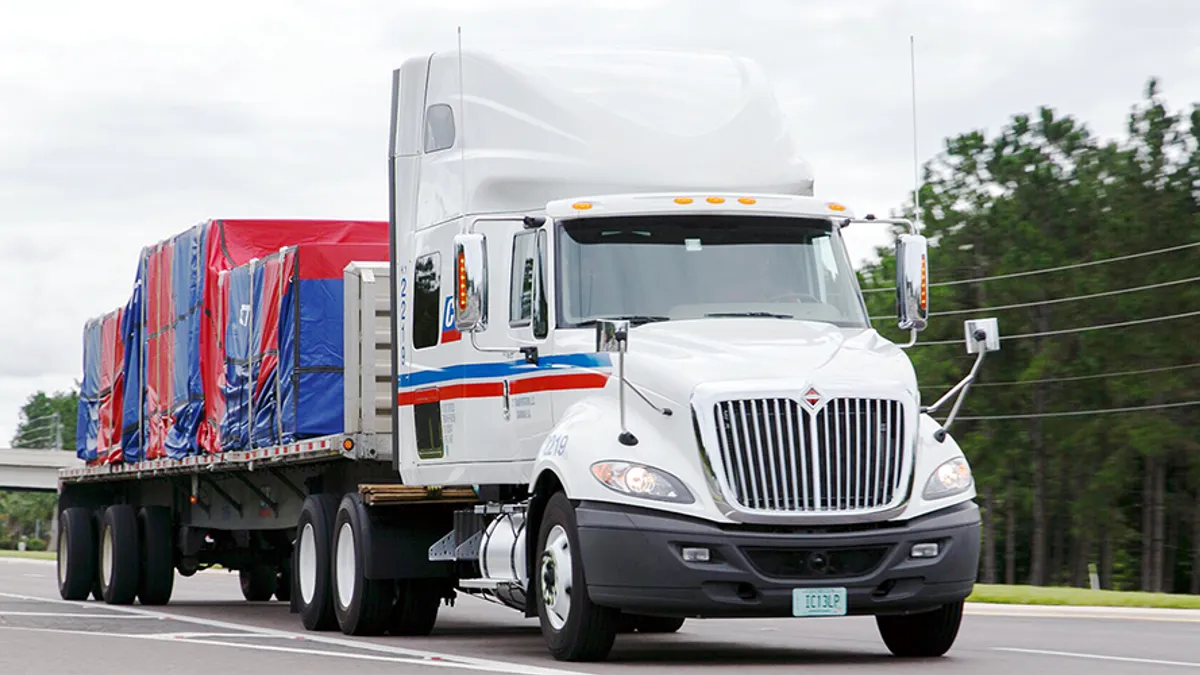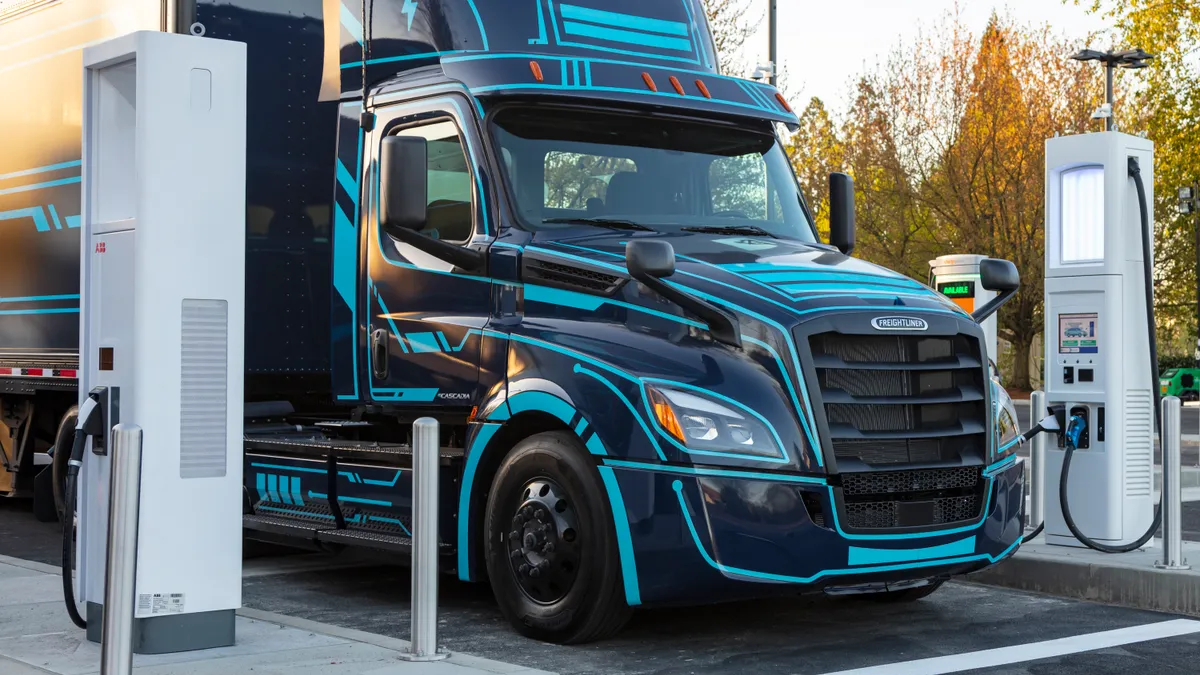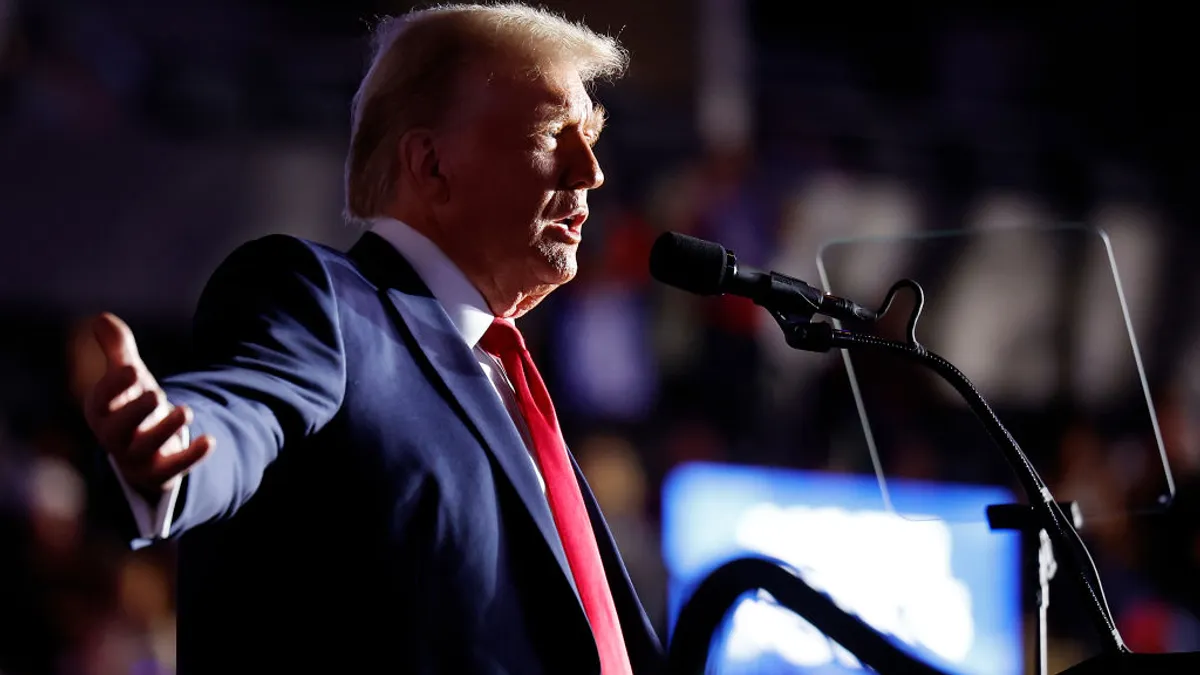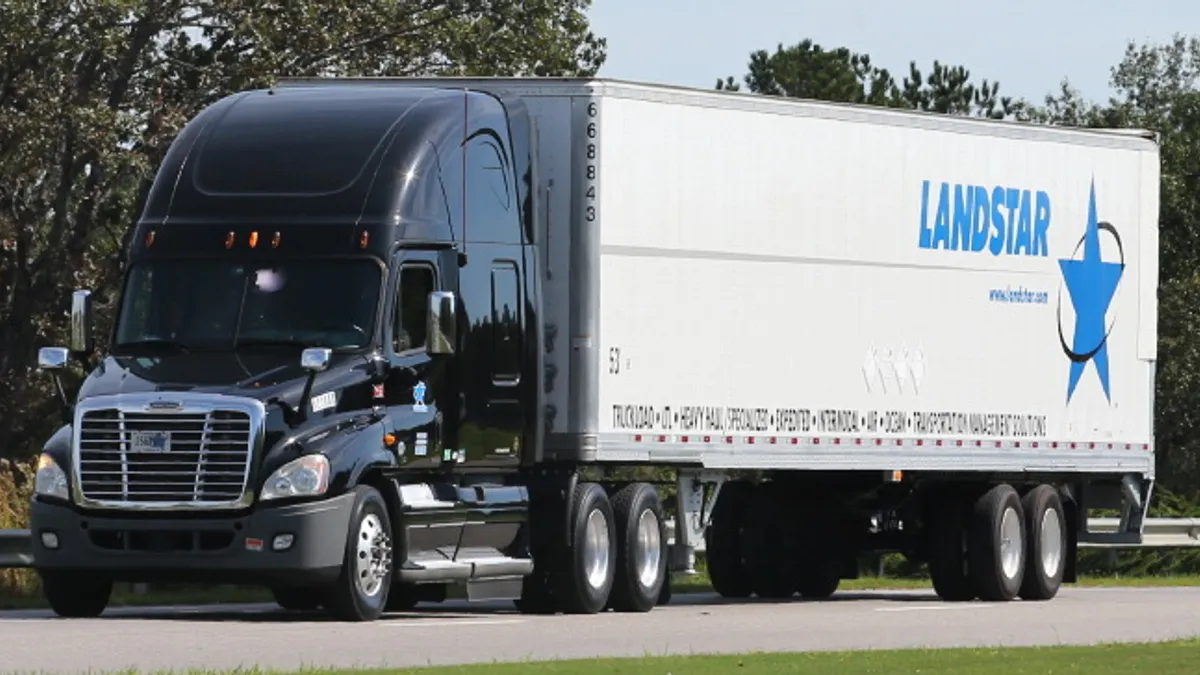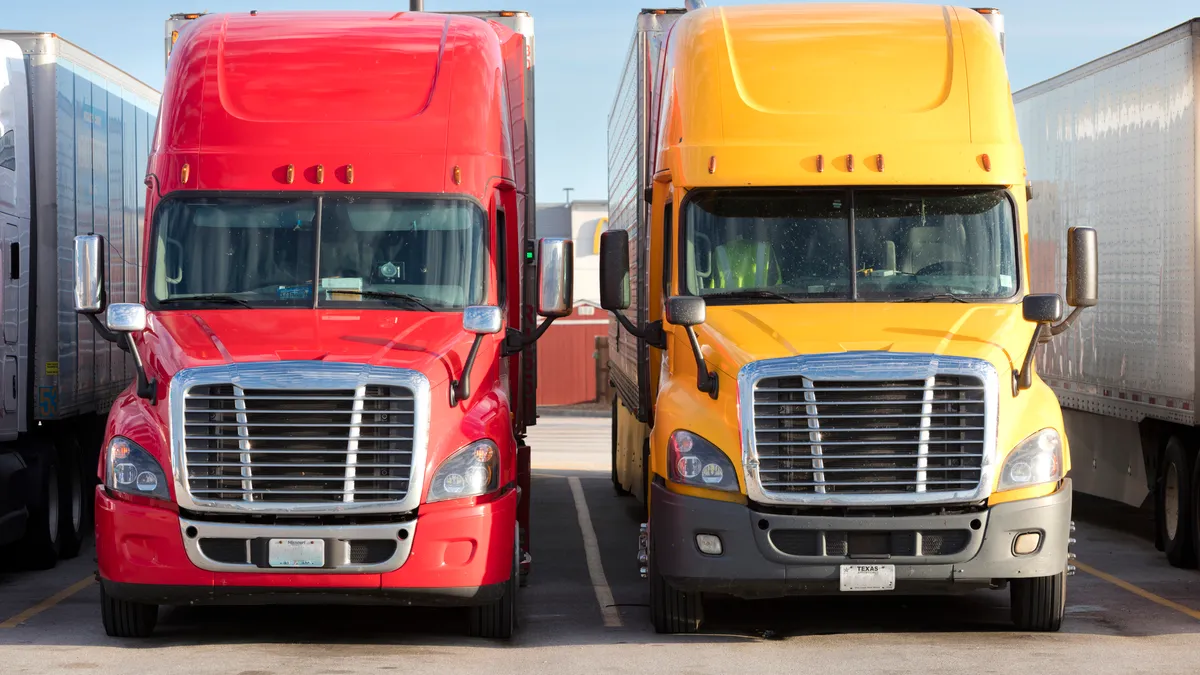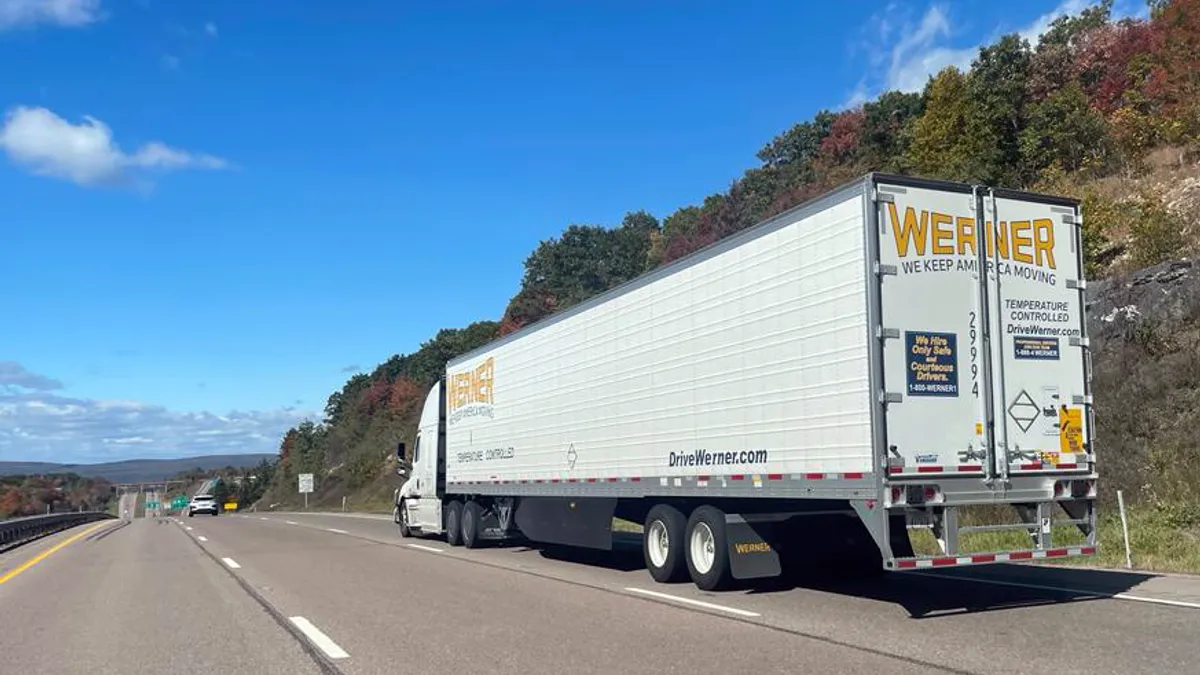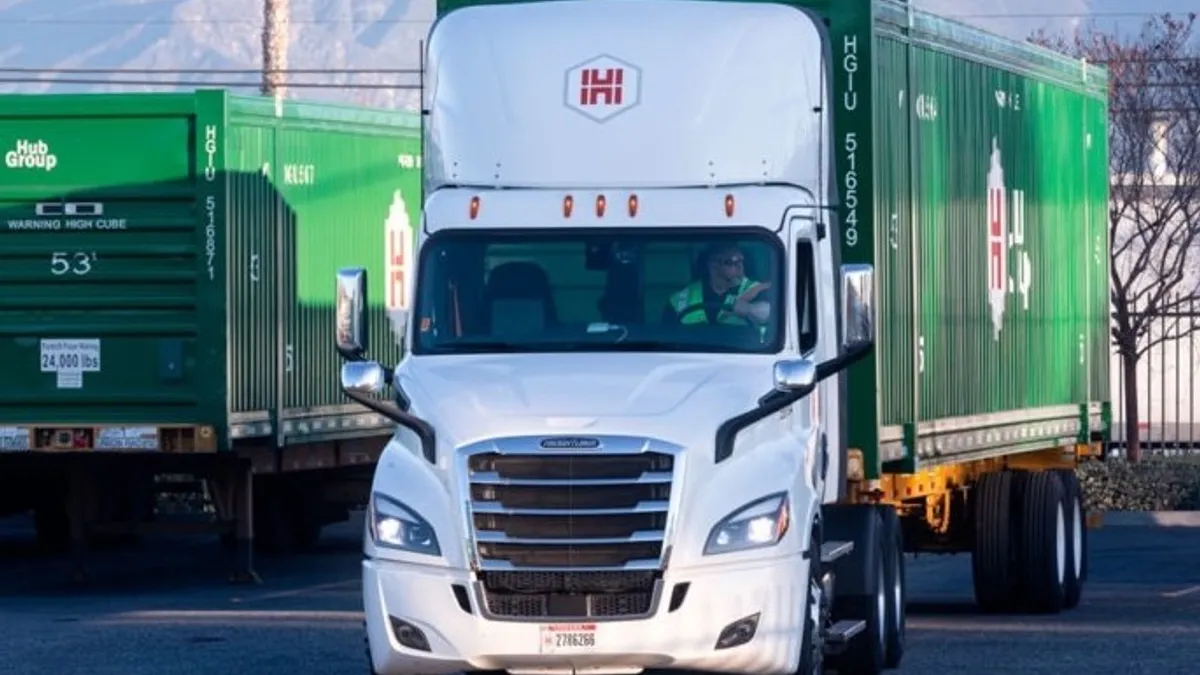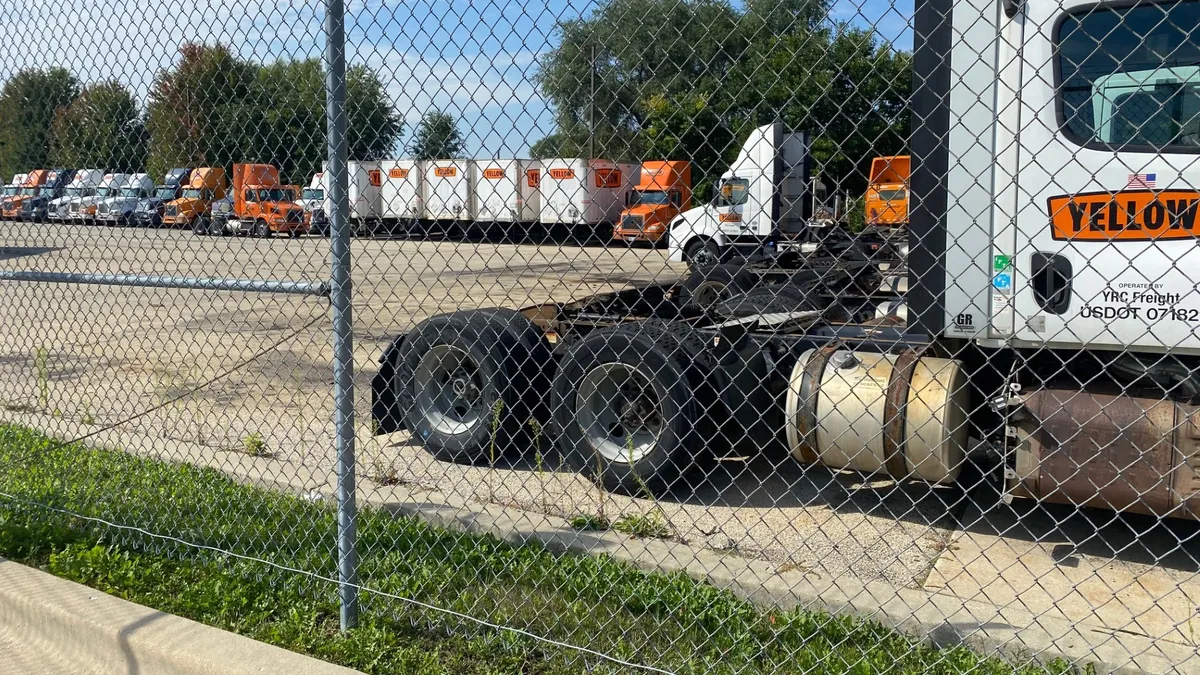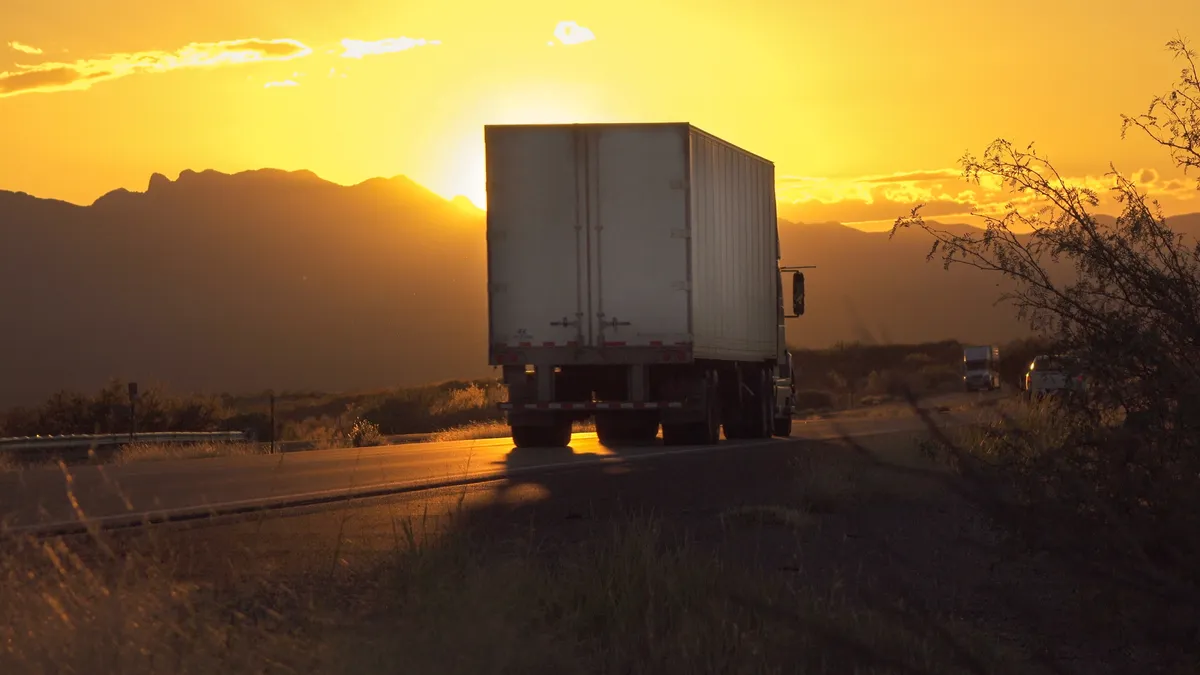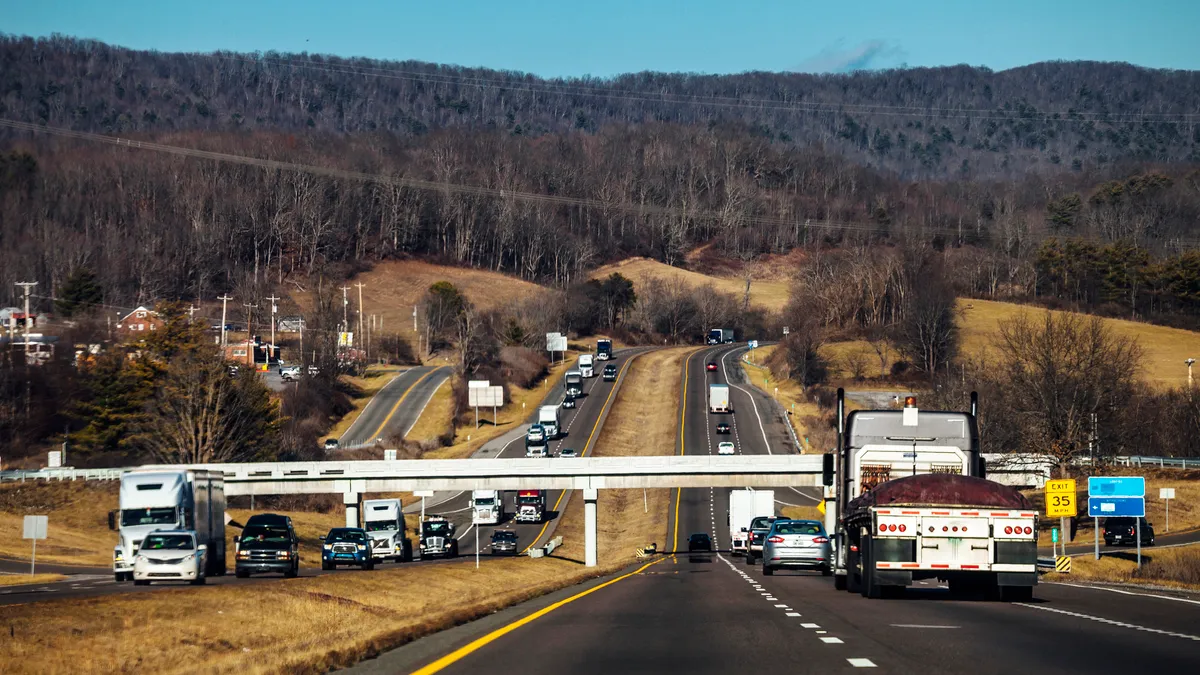This story is part of the Transport Dive Outlook on 2021, a series on the trends that will shape the industry in 2021. For a look at the business trends affecting other industries, see the Dive Outlook on 2021.
The success of trucking in 2021 is contingent upon the health of the economy. When the pandemic was first reported in the United States, trucking benefited from the panic buying. But then came the full effect the pandemic-related shutdowns and slowdowns had on business and households, and truckload spot prices plummeted.
The economy moved toward the depths seen in the Great Recession of 2007-2009, projecting a miserable year for trucking. The industry began counting on economic recovery to occur at the end of 2020 and into the new year.
So, will 2021 fulfill those hopes? On Jan. 14, FTR officials came together for a forecast, and the outlook for trucking was positive, as it was for the economy as a whole.
Consumers kept buying throughout last summer and trucking began to rebound. That caused spot prices to steadily rise through 2020, and that attracted carriers. From July through the end of November, almost 31,000 firms registered, or obtained motor-carrier authority, with the FMCSA, according to Avery Vise, FTR vice president of trucking. That upward trajectory has continued.
The 2021 transport economy is improving — even industrial production appears to be catching up after last year's shutdowns. That was one of the conclusions that Vise and other FTR officials came to, as highlighted in its 2021 forecast during their webinar.
"[Core capital goods] is a pretty good proxy for business investment. And it's a very positive sign for the economy as we enter 2021."

Avery Vise
Vice President of Trucking at FTR
Industrial production, usually a driver of the dry van sector, took a deep drop during the pandemic's initial onset. Inventories in manufacturing are still higher as they relate to sales, according to Avery Vise, FTR vice president of trucking, and that's been aggravated by labor availability, supply chain disruptions and a weak energy sector.
An increase in orders for core capital goods is a sign those market forces are taking a turn for the better, said Vise. Core capital goods, which exclude defense and aircraft products, are at all all-time high in terms of nominal dollars.
"This business indicator is a pretty good proxy for business investment," said Vise. "And it's a very positive sign for the economy as we enter 2021."
Coronavirus concerns
Vise said his observations were backed up in real-time by other data, including the spot market. The year started with active truck utilization nearing 96%, he said, a rate it hasn't touched since the end of the 2017-2018 freight boom. During that freight boom, FTR estimated that active truck utilization, the use of seated Class 8 trucks, hit 100% and stayed there for a while.
Thus, FTR executives were generally positive about what they were seeing. But there was one metric that concerned them the most: growing case numbers of COVID-19.
Vise said he was "pretty optimistic" about industrial growth, but COVID-19 absenteeism could weigh down industrial recovery. Vise also said another weight on the trucking sector could be caused by the federal drug-and-alcohol database taking drivers off the road.
The drag on more robust growth, however, tends to be the stickiness of the pandemic. Jonathan Starks, FTR chief intelligence officer, said COVID-19's U.S. statistics — hospitalizations, positive cases and daily deaths — continue to climb, even as vaccinations begin. The vaccinations will take time to have effect, he said.
"It will probably be some time well into February, at a minimum, before we really see any sort of peaking out," said Jonathan Starks. "Hopefully not just stabilization but a reduction in a lot of these measurements."
"It will probably be some time well into February, at a minimum, before we really see any sort of peaking out."

Jonathan Starks
Chief intelligence officer, FTR
In the case of laggardly recovery, the federal government is aiming to pass a new relief package. President Joe Biden, newly sworn in, wants Congress to pass a $1.9 trillion spending bill.
Job losses still vex the recovery. The economy is still down 10 million jobs since the onset of the pandemic in spring 2020, Vise said, and it's all because of the pandemic. FTR officials agreed the latest wave of COVID-19 illnesses are hurting the economy anew.
Clay Slaughter, FTR chief strategy officer, said he expects a regional response to the outbreaks, and not a nationwide approach led by the Biden White House. The regional responses will decrease productivity, Slaughter said.
Looking ahead to H2 2021
Eric Starks, FTR CEO, said once people feel more comfortable going out, especially in the second half of 2021, all sectors, including hospitality and leisure services, will return to normal.
Slaughter noted that hospitality and leisure are consumers of goods, too, and their return to normalcy will cause a demand for their sectors' freight needs — such as food, beverages and linens.
Consumer cash was being saved at the beginning of the pandemic onset, Vise said, with the seasonally adjusted annual savings rate jumping above 30% in April. Recently, that has dropped to about 10%, FTR reported, as consumers open their wallets and spend more, likely causing more freight demand.
But Vise said the recent $600 stimulus checks may not be the boost that lawmakers assumed it would be, and it likely won't compare to the first round of federal coronavirus relief, when the government sent out $1,200 checks and expanded unemployment benefits.
"There is a lot of cash that has been saved," said Vise. "I think that raises questions about how impactful the $600 is going to be when it's really not a lack of cash ... I just don't think people should expect anything close to what we saw in May, June, July coming out of contraction."


